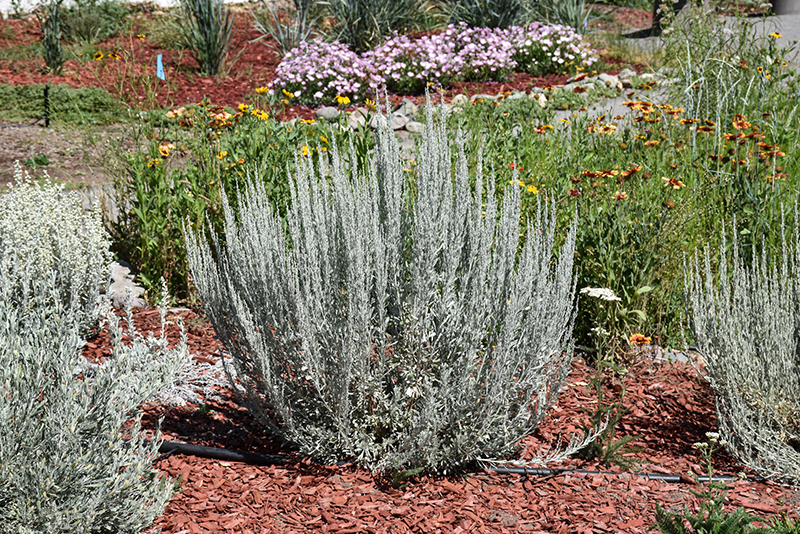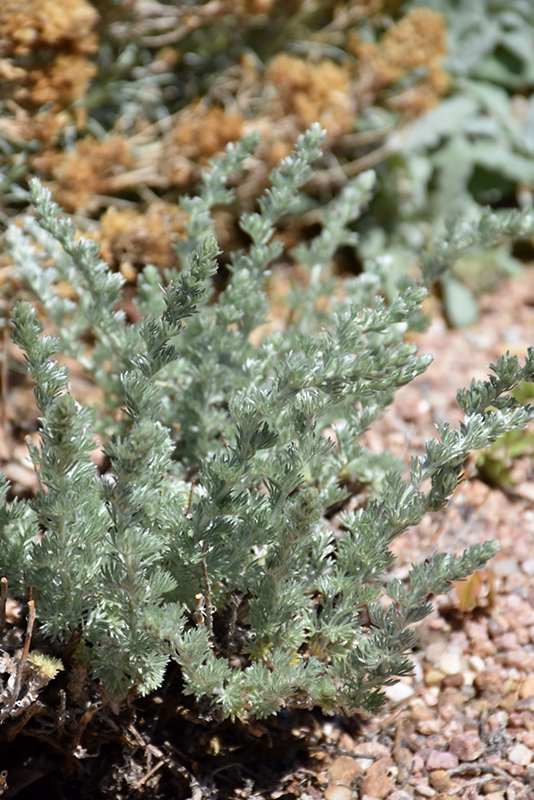Height: 18 inches
Spacing: 12 inches
Sunlight:
![]()
Hardiness Zone: 3a
Other Names: Fringed Sage, Silky Wormwood, Mugwort
Description:
This selection presents soft, fragrant silver foliage and a low, upright habit, excellent for contrast in garden beds or as a shimmering groundcover; drought tolerant once established; prune only in early spring to keep compact and shapely
Ornamental Features
Prairie Sagebrush's attractive deeply cut ferny leaves emerge white in spring, turning grayish green in color with hints of silver throughout the season on a plant with an upright spreading habit of growth. It features subtle lightly-scented yellow round flowers at the ends of the stems in late summer. The white stems can be quite attractive.
Landscape Attributes
Prairie Sagebrush is a dense herbaceous perennial with an upright spreading habit of growth. It brings an extremely fine and delicate texture to the garden composition and should be used to full effect.
This is a relatively low maintenance plant, and is best cleaned up in early spring before it resumes active growth for the season. It is a good choice for attracting bees to your yard, but is not particularly attractive to deer who tend to leave it alone in favor of tastier treats. It has no significant negative characteristics.
Prairie Sagebrush is recommended for the following landscape applications;
- Mass Planting
- Rock/Alpine Gardens
- Border Edging
- General Garden Use
- Groundcover
- Naturalizing And Woodland Gardens
- Container Planting
Planting & Growing
Prairie Sagebrush will grow to be about 18 inches tall at maturity, with a spread of 18 inches. When grown in masses or used as a bedding plant, individual plants should be spaced approximately 12 inches apart. Its foliage tends to remain dense right to the ground, not requiring facer plants in front. It grows at a medium rate, and under ideal conditions can be expected to live for approximately 10 years. As an herbaceous perennial, this plant will usually die back to the crown each winter, and will regrow from the base each spring. Be careful not to disturb the crown in late winter when it may not be readily seen!
This plant should only be grown in full sunlight. It prefers dry to average moisture levels with very well-drained soil, and will often die in standing water. It is considered to be drought-tolerant, and thus makes an ideal choice for a low-water garden or xeriscape application. This plant does not require much in the way of fertilizing once established. It is not particular as to soil pH, but grows best in poor soils, and is able to handle environmental salt. It is highly tolerant of urban pollution and will even thrive in inner city environments. This species is native to parts of our region. It can be propagated by division.
Prairie Sagebrush is a fine choice for the garden, but it is also a good selection for planting in outdoor pots and containers. It is often used as a 'filler' in the 'spiller-thriller-filler' container combination, providing a mass of flowers and foliage against which the larger thriller plants stand out. Note that when growing plants in outdoor containers and baskets, they may require more frequent waterings than they would in the yard or garden.

